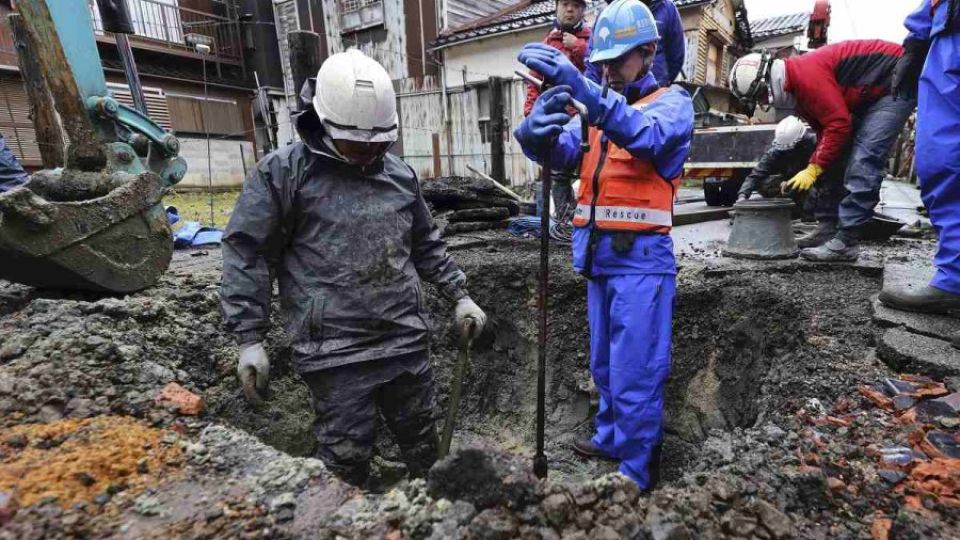TOKYO (ANN/THE YOMIURI SHIMBUN) – Officials and private-sector personnel have been mobilised by local governments across Japan, including the Tokyo metropolitan government, to assist Ishikawa Prefecture’s municipalities affected by the Noto Peninsula Earthquake.
The disaster, which struck on January 1, inflicted severe damage on crucial infrastructure like water and sewer systems.
In Wajima and five neighbouring municipalities on the peninsula, approximately 20,000 households remain deprived of running water even two months later, significantly hampering the affected residents’ efforts to return to normalcy.
According to the Japan Water Works Association, a total of 632 personnel were dispatched to the area for the restoration work as of Tuesday. Of those, 278 were from local governments and water supply corporations — including those of Tokyo, Nagoya and Kobe — while 354 were private-sector workers.
In Wajima, Tokyo metropolitan government officials are dividing the work with those dispatched from Saga City and Kure, Hiroshima Prefecture.
Expert knowledge is essential in examining the damage to water pipes that are buried underground. Workers listen to the sound of leaking water with special tools to identify where the water pipes are damaged.
Once the location of a water leak is identified, workers carefully dig the ground around the area using small backhoes and shovels. Water pipes are usually buried 1.2 to 1.5 metres underground, so it takes a few hours to restore one location. In some cases, restoration work cannot be finished in one day.
In some instances, water pipes were seriously disconnected and became clogged with sediment that flowed into the pipes. In order to identify where the pipes were clogged, workers had to dig the ground in several locations.
“The work here is completely different from what is usually done to repair water leaks,” said the head of the Hachioji Service Station of the Tokyo metropolitan government’s Bureau of Waterworks. “All we can do is to work steadily by making use of our techniques and imaginations.”
During the period immediately after the disaster, dispatched personnel were forced to travel from Kanazawa every day. As a one-way trip took them about five hours, they could spend only four to five hours a day on restoration work. Since they became able to stay in Wajima in mid-February, their working hours have almost doubled.
“People come out of their homes and thank us, saying things like, ‘Thank you for coming from Tokyo. Now we’ll be able to use water.’ We cannot waste even a single day for the sake of the residents,” said a 50-year-old official of the Tokyo metropolitan government’s Bureau of Waterworks.
However, the area has many houses that have been judged “dangerous” in a preliminary post-quake inspection of damaged buildings. Therefore, workers need to be on the alert for possible hazards.
“There is a risk that a house could collapse on top of workers. So, we have to work with caution. It makes our work very difficult,” said an official.
According to the Health, Labor and Welfare Ministry, local government-dispatched officials and others are working to restore water pipes connecting water filtration and supply plants with residential areas in five other municipalities, including Suzu.
It is expected that more than 90 per cent of water outages in these areas will be restored by the end of March.
“Specialised knowledge and experience is needed for the restoration work, which is difficult to complete without the help of people with such expertise,” said a Health, Labour and Welfare Ministry official. “We really respect the officials and other workers who are there to give a helping hand.”







